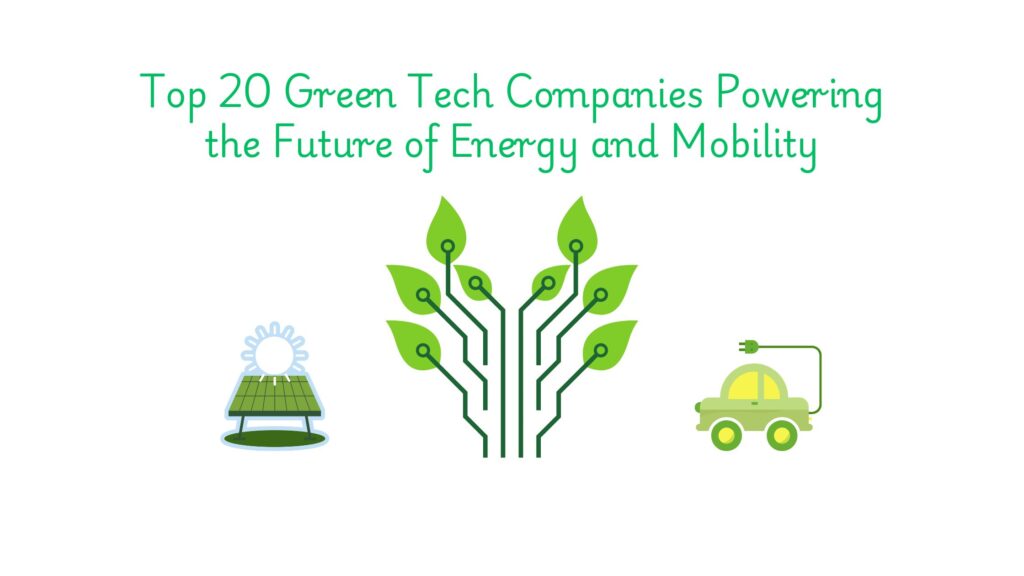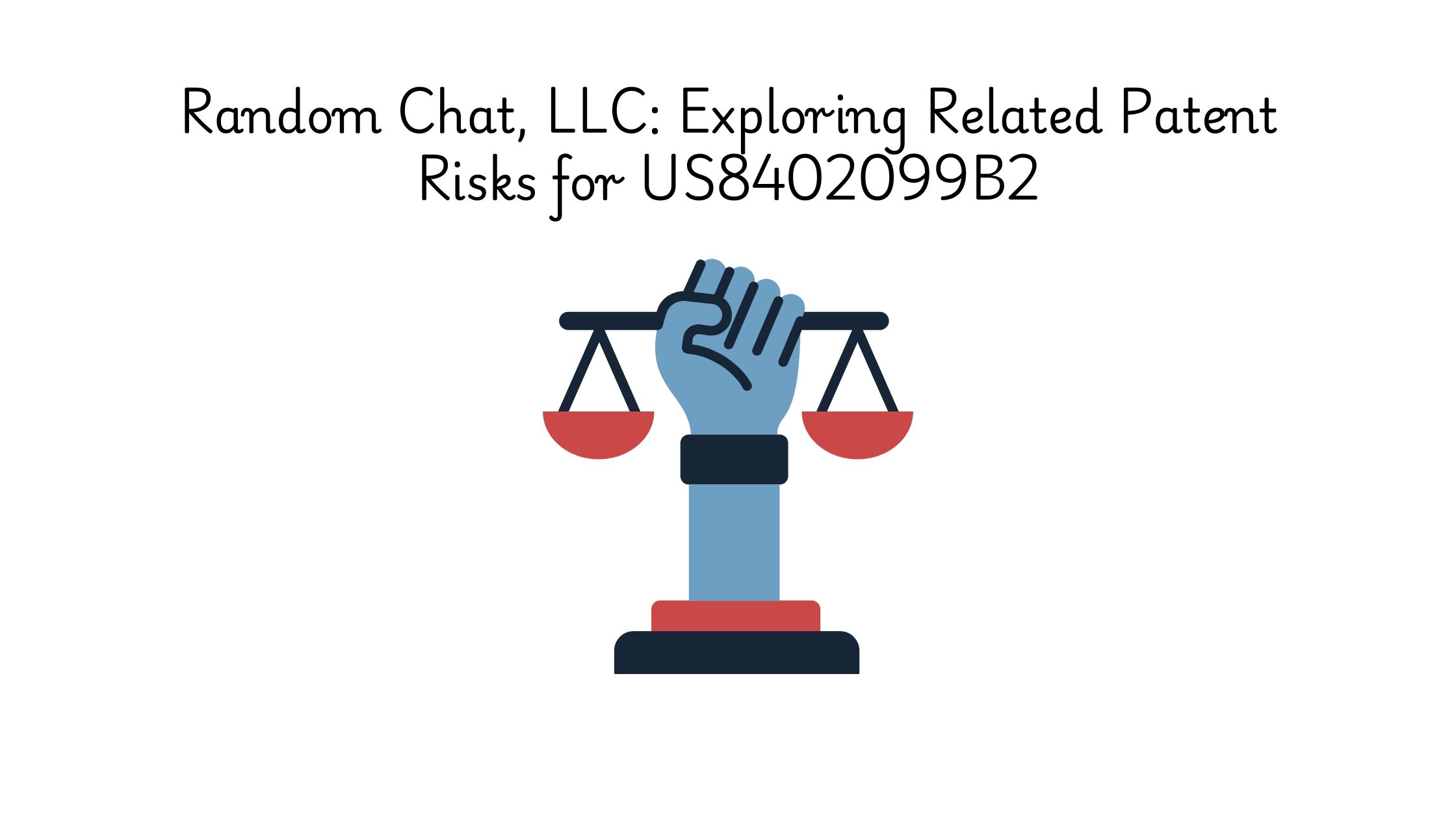Green tech isn’t a trend. It’s the backbone of the next energy revolution. The global market for green technology and sustainability is projected to exceed $73 billion within five years, driven by climate regulation, investor urgency, and breakthrough innovation.
From gigafactories building the next generation of EV batteries to wind farms feeding power-hungry cities, the world is shifting toward cleaner, smarter infrastructure.
But in a sea of promises, who’s actually delivering results?
In this article, you’ll discover 20 companies leading the charge in energy, mobility, and storage. These innovators aren’t just reducing emissions. They’re reshaping entire industries with scalable tech and serious Intellectual Property (IP) strategy.
#1. Tesla, Inc.
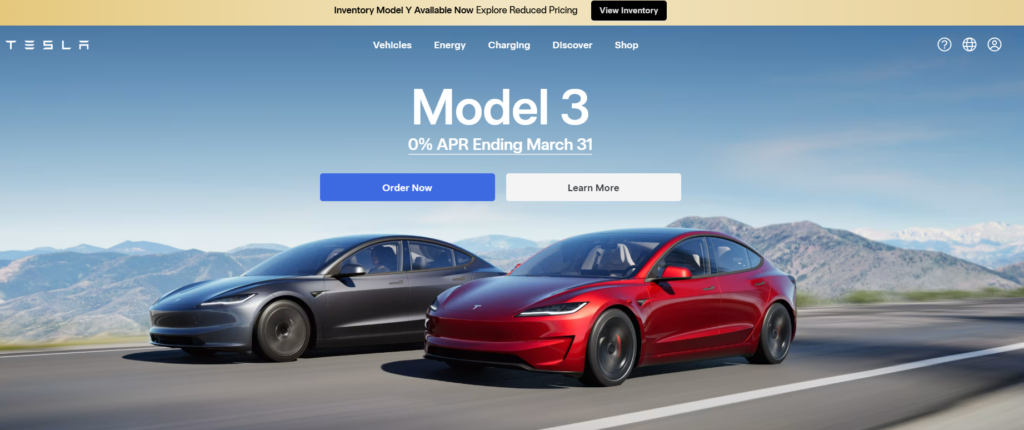
Source: Tesla
Tesla is at the center of the green tech movement, driving mass adoption of electric vehicles and clean energy storage. It isn’t just building cars; it’s engineering a fully integrated clean energy ecosystem. Tesla’s Gigafactories are optimized for zero-waste manufacturing, battery recycling, and sustainable materials sourcing. With over 3,000 energy-related patents, its IP leadership spans EV drivetrains, battery chemistry, thermal management, and solar tech.
The company’s impact extends beyond mobility. Tesla’s Megapacks provide utility-scale storage to stabilize solar and wind supply, while Powerwall systems help homes operate as energy-efficient microgrids. Together, these technologies are shaping a more resilient, electrified energy future.
Key Innovations
#1. Model Y & Model 3: High-efficiency EVs with industry-leading range (over 330 miles), produced at scale.
#2. Megapack: Grid-scale lithium-ion storage with 3.9 MWh capacity per unit, used in renewable energy farms globally.
#3. Powerwall: Residential energy storage enabling backup power, solar optimization, and energy independence.
#4. Solar Roof: Durable solar tiles integrated into rooftops, offering clean energy generation without traditional panels.
#2. BYD Company Limited
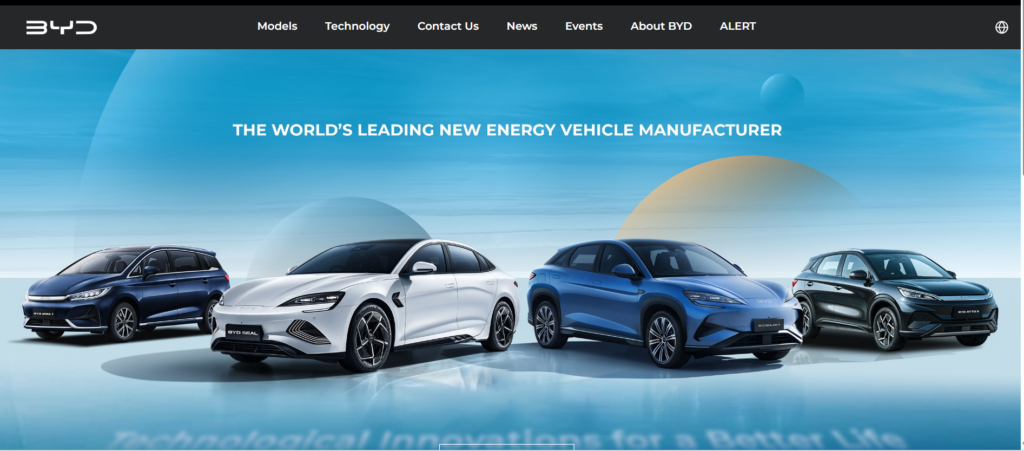
Source: BYD
BYD is a global leader in green technology, specializing in electric vehicles (EVs), renewable energy solutions, and advanced battery innovations. The company’s vertical integration, from battery production to vehicle manufacturing, enhances efficiency and sustainability across its operations.
A cornerstone of BYD’s green tech strategy is its Blade Battery. This lithium iron phosphate (LFP) battery boasts enhanced safety, longevity, and cost-effectiveness, addressing critical challenges in EV adoption. Beyond passenger vehicles, BYD’s SkyRail, an electric monorail system, offers a sustainable urban transit solution, reducing reliance on fossil fuels in densely populated areas. Additionally, BYD’s Energy Storage Solutions integrate renewable energy sources into power grids, facilitating a more resilient and cleaner energy infrastructure.
Key Innovations
#1. Blade Battery: A safer, longer-lasting LFP battery enhancing EV performance and affordability.
#2. SkyRail: An electric monorail system providing eco-friendly urban transportation.
#3. Energy Storage Solutions: Systems that integrate renewable energy into power grids, promoting sustainability.
#3. Leclanché
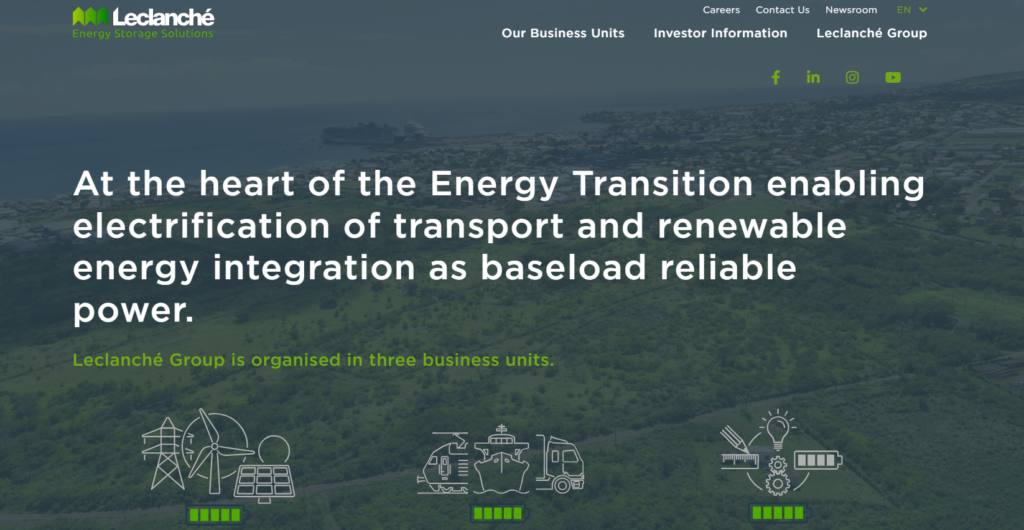
Source: Leclanche
Leclanché is a Swiss company focused on high-performance lithium-ion battery systems for transport and grid-scale storage. Its core innovation lies in building modular, scalable energy storage systems that help stabilize power supply from renewable sources like wind and solar.
The company plays a critical role in decarbonizing maritime transport through its marine battery systems, which are already used in hybrid and fully electric ferries. Leclanché also supports large-scale electrification of buses and commercial fleets, helping cities transition toward cleaner mobility infrastructure.
Key Innovations
#1. Marine Rack System: Lithium-ion battery packs designed for electric and hybrid vessels.
#2. eTransport Solutions: Modular battery systems for buses, trucks, and trains.
#3. Stationary Energy Storage: Grid-connected systems that manage renewable power volatility.
#4. ZeroAvia

Source: ZeroAvia
ZeroAvia is a US-based aviation startup developing hydrogen-electric engines to eliminate emissions from regional air travel. Its powertrains replace conventional jet fuel systems with hydrogen fuel cells, aiming to cut aviation’s carbon footprint at the source.
The company is already flight-testing its 600kW engine on 19-seat aircraft, with plans to expand into larger commercial segments. By targeting short-haul flights with zero-emission propulsion, ZeroAvia is creating a pathway for cleaner skies without compromising range or performance.
Key Innovations
#1. ZA-600: Hydrogen-electric engine for 9 to 19-seat aircraft, now in live test flights.
#2. High-Pressure Hydrogen Storage: Enables extended flight range without fossil fuels.
#3. Modular Propulsion Systems: Designed to retrofit existing aircraft for lower-cost adoption.
#5. Canadian Solar
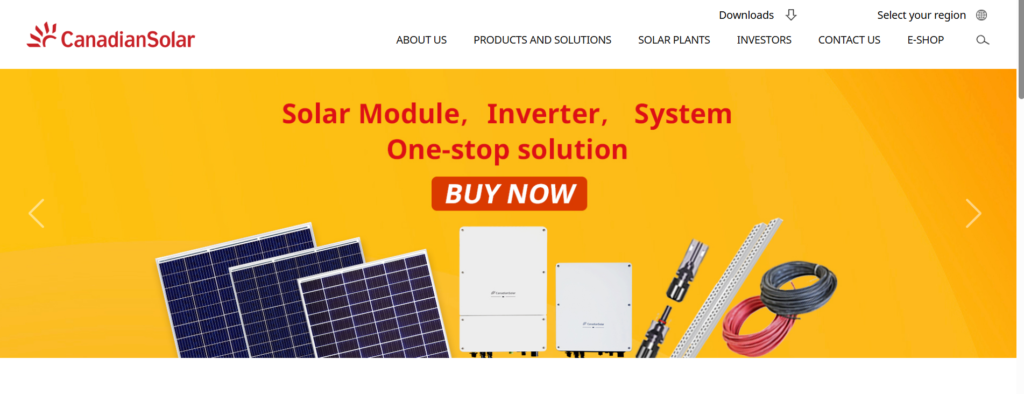
Source: Canadian Solar
Canadian Solar is one of the world’s largest solar energy companies, delivering over 125 gigawatts of photovoltaic (PV) modules to over 160 countries. Headquartered in Canada with global manufacturing operations, it plays a major role in accelerating access to clean energy infrastructure.
The company designs and builds solar modules and large-scale solar plus battery storage projects. Its next-gen N-type TOPCon panels offer higher efficiency and better performance in low-light conditions, making clean energy more reliable and cost-effective across geographies.
Key Innovations
#1. TOPCon Solar Modules: High-efficiency panels with improved durability and energy yield.
#2. EP Cube: All-in-one residential energy storage system for solar integration.
#3. Utility-Scale PV + Storage Projects: End-to-end solutions powering grids with solar and batteries.
#6. Form Energy
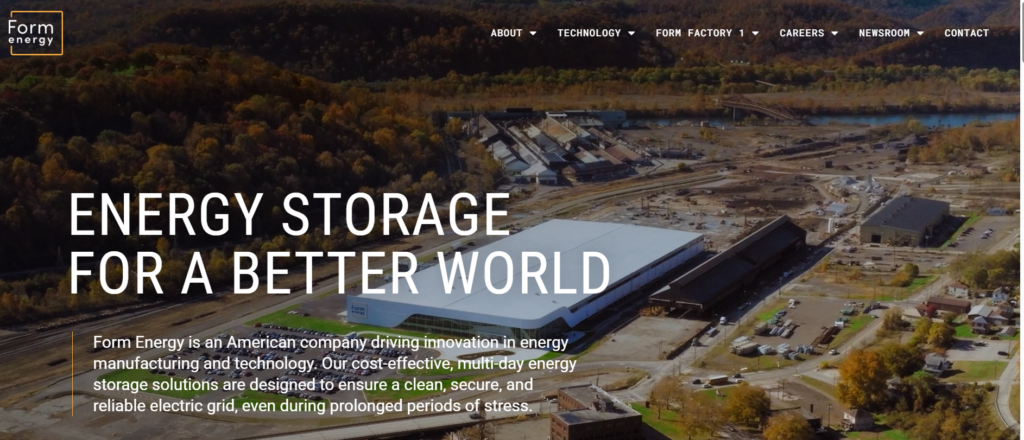
Source: Form Energy
Form Energy is a US-based energy storage company developing multi-day batteries that enable 100% renewable power grids. Its proprietary iron-air battery technology stores electricity for up to 100 hours at low cost, solving one of the biggest challenges in clean energy: intermittency.
These batteries are designed to support grid stability during long periods without sun or wind. Backed by partnerships with utility companies and funding from Breakthrough Energy Ventures, Form is laying the foundation for a reliable, fossil-free energy future.
Key Innovations
#1. Iron-Air Battery: A rechargeable system using iron, air, and water to store energy over multiple days.
#2. Form Battery System: Scalable storage built for long-duration grid support.
#3. Grid-Scale Pilot Projects: Deployments underway in Minnesota and Georgia for utility customers.
#7. Zenobe
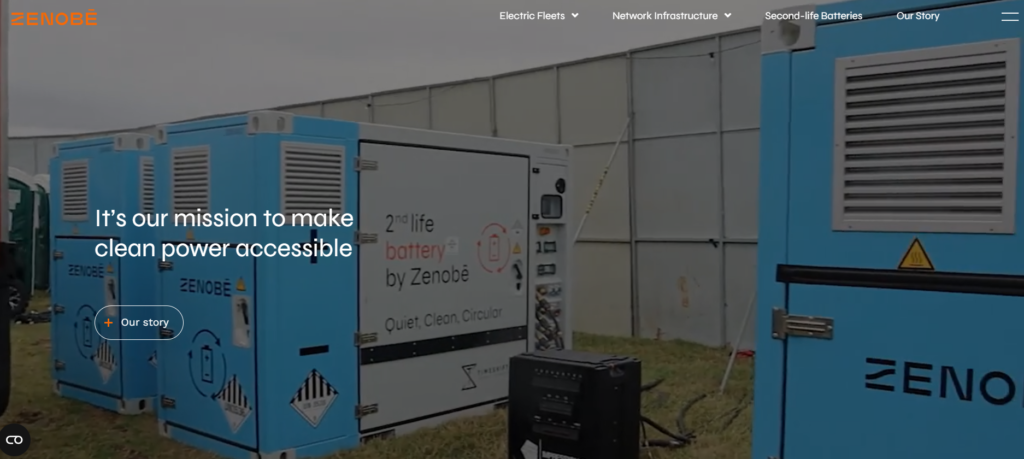
Source: Zenobe
Zenobe is a UK-based green tech company focused on battery storage and electric fleet infrastructure. It operates one of the largest battery portfolios in Europe and supports the electrification of buses, depots, and public transport systems across the UK.
Its energy storage systems balance renewable generation on the grid, while its transport division provides turnkey solutions for e-bus charging and fleet optimization. Zenobe’s model integrates software, infrastructure, and energy services to accelerate decarbonization in the transit and energy sectors.
Key Innovations
#1. Grid-Scale Battery Systems: Enables renewable energy integration and grid balancing.
#2. Electric Bus Infrastructure: End-to-end electrification of public transport fleets.
#3. Smart Charging Software: Optimizes fleet energy usage and reduces peak demand costs.
#8. 24M Technologies
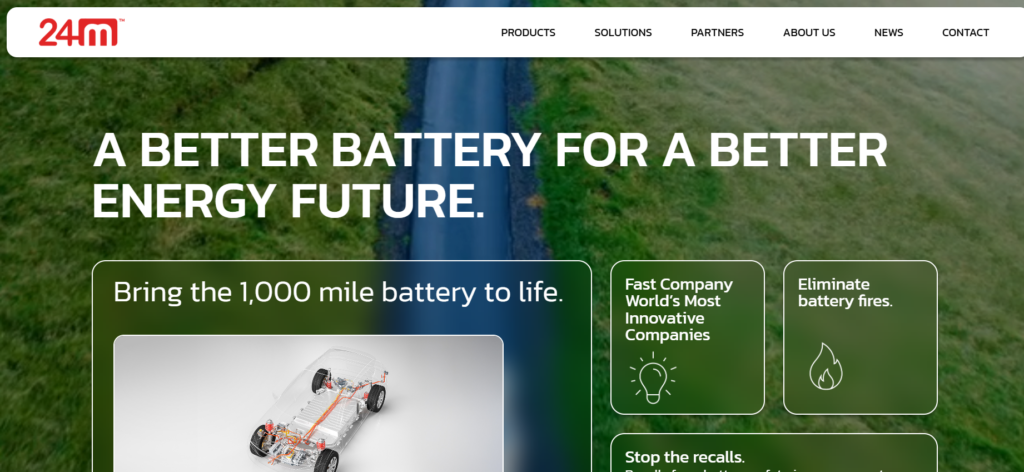
Source: 24M
24M Technologies is a US-based battery innovation company spun out of MIT, reinventing how lithium-ion batteries are made. Its SemiSolid manufacturing platform reduces cost, improves safety, and increases energy density by simplifying the traditional battery architecture.
The company licenses its technology to global manufacturers, enabling the production of more sustainable, high-performance batteries for electric vehicles and stationary storage. 24M is helping scale energy storage with fewer emissions and less material waste.
Key Innovations
#1. SemiSolid Battery Platform: Simplifies manufacturing while increasing energy density.
#2. Low-Cost EV Battery Design: Reduces materials usage and environmental impact.
#9. Field
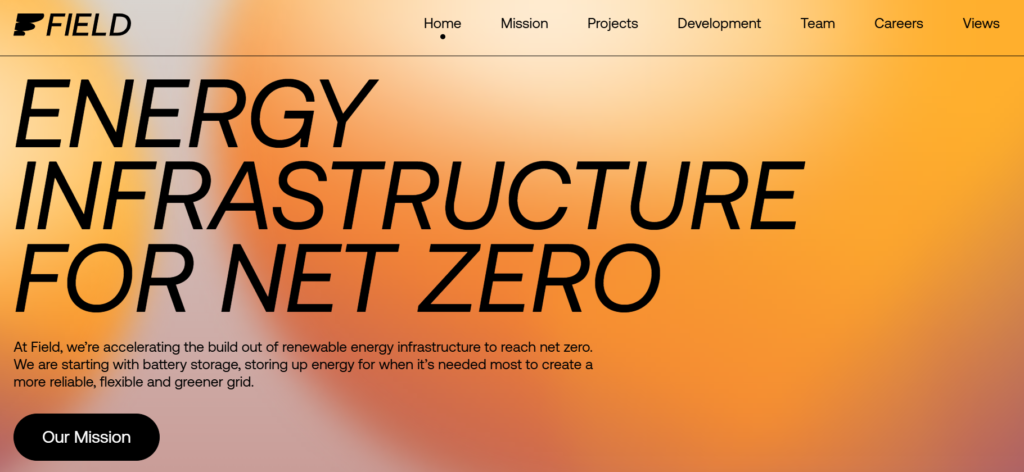
Source: Field
Field is a UK-based energy storage company building grid-scale battery projects to accelerate the transition to renewable power. It develops, owns, and operates battery systems that help balance supply and demand, making wind and solar more dependable across national grids.
By enabling faster response times and energy arbitrage, Field’s systems reduce the need for fossil-fuel backup plants. Its approach focuses on speed-to-deployment and flexibility, helping grid operators replace gas peakers with cleaner storage alternatives.
Key Innovations
#1. Battery Energy Storage Sites: Operational assets providing fast-response balancing services.
#2. Flexible Grid Infrastructure: Built to support fluctuating renewable generation.
#3. Project Pipeline: Rapid expansion across the UK and Europe with new 100+ MWh deployments.
#10. Hydrostor
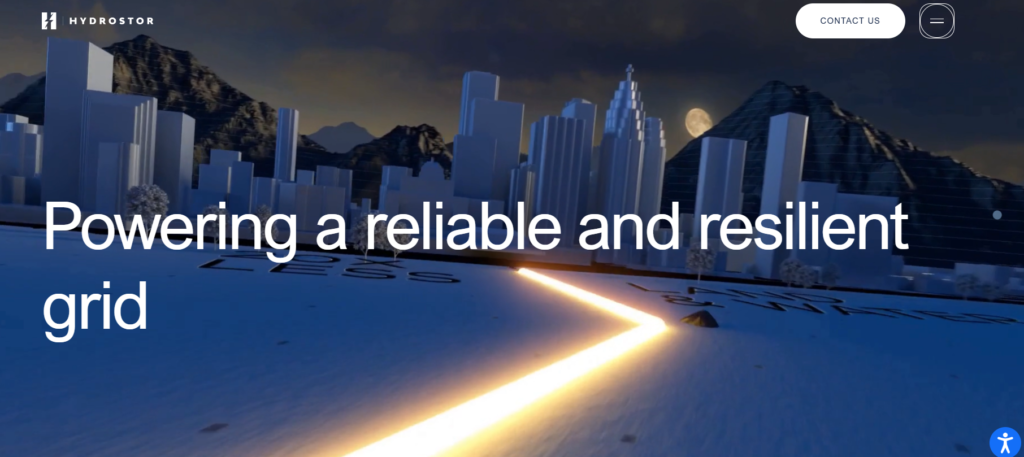
Source: Hydrostor
Hydrostor is a Canadian company specializing in long-duration energy storage using Advanced Compressed Air Energy Storage (A-CAES) technology. Its system stores energy by compressing air and storing it in underground caverns, later releasing it to generate electricity on demand.
Unlike lithium-ion, A-CAES uses abundant materials and has a 50+ year asset life, making it cost-effective and environmentally safe for grid-scale storage. Hydrostor is already partnering with utilities in California and Australia to build systems in the hundreds of megawatts.
Key Innovations
#1. A-CAES Technology: Stores energy using air, heat, and water with zero combustion.
#2. Goderich Facility: World’s first operational A-CAES system in Ontario.
#3. Utility Partnerships: 500+ MW of storage projects underway in North America and Australia.
#11. Antora Energy
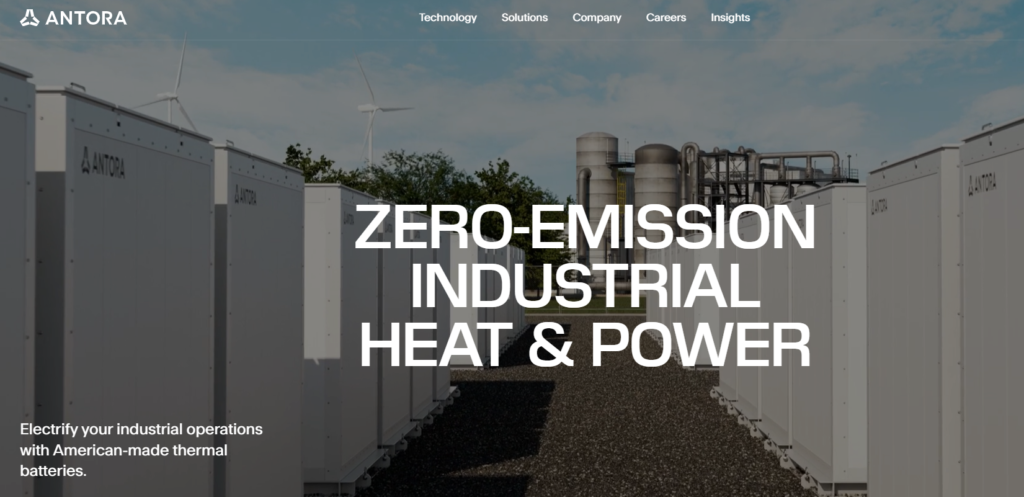
Source: Antora
Antora Energy is a US-based startup transforming how industrial heat and power are delivered. Its thermal battery stores renewable electricity as heat using carbon blocks, then converts it back to electricity or industrial heat when needed.
This helps decarbonize industries that depend on high-temperature processes, like cement, steel, and chemicals. The system is cost-competitive with natural gas, offering a clean alternative where batteries and hydrogen fall short.
Key Innovations
#1. Thermal Battery System: Converts renewable electricity into ultra-high temperature heat.
#2. Carbon Block Technology: Safe, recyclable material for thermal storage.
#3. On-Site Heat and Power Units: Designed to replace fossil fuel-based industrial heating.
#12. Skeleton Technologies
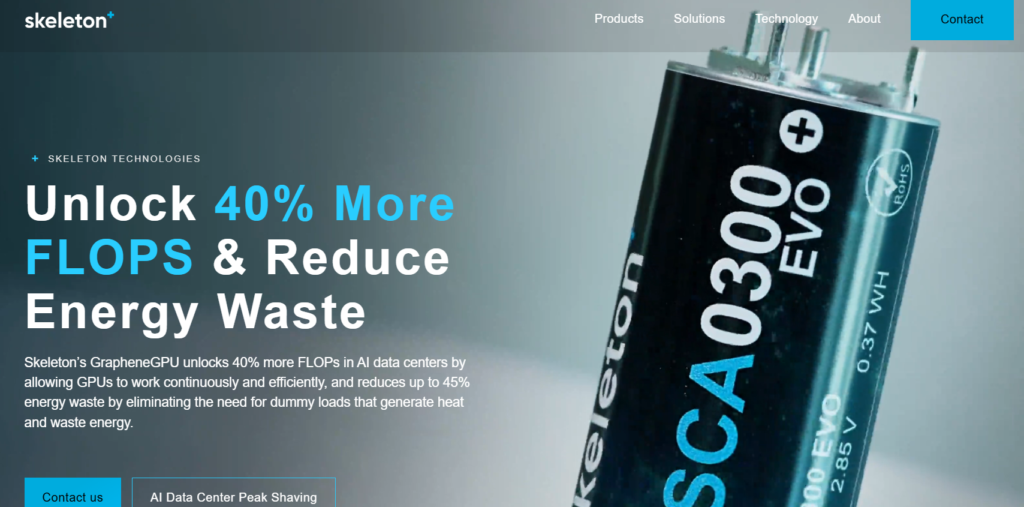
Source: Skeleton
Skeleton Technologies is an Estonia- and Germany-based company developing ultracapacitors and next-gen supercapacitors. These energy storage devices charge and discharge faster than batteries and are ideal for short bursts of power in transport and grid applications.
Skeleton’s curved graphene material gives its devices higher energy density and efficiency. Its tech is used in electric buses, trains, and grid systems across Europe, helping reduce energy waste and extend battery life.
Key Innovations
#1. SkelCap Ultracapacitors: High-power modules for electric transport and industry.
#2. SuperBattery: Hybrid energy storage system combining the best of capacitors and batteries.
#3. Curved Graphene Material: Patented tech enabling faster charge and higher lifecycle performance.
#13. T1 Energy
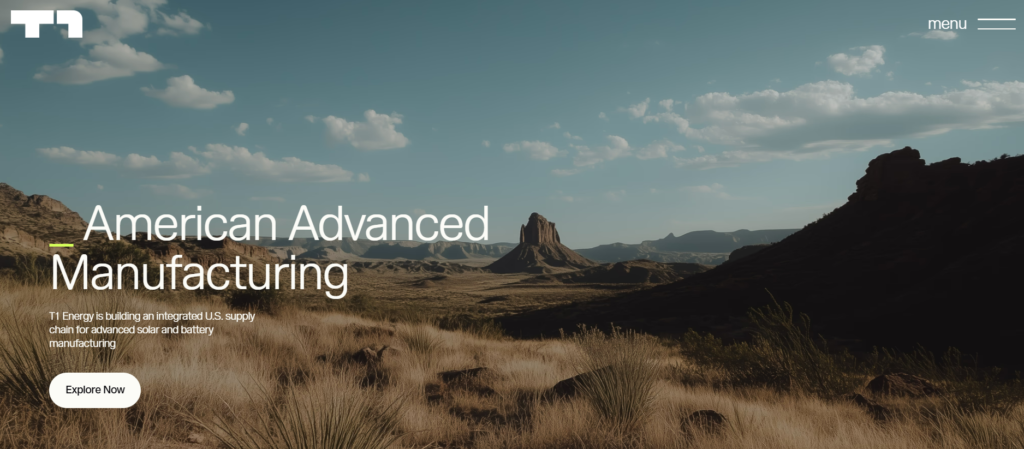
Source: T1
T1 Energy is a US-based solar manufacturing company investing in domestic clean energy supply chains. Backed by KKR, it’s building an $850 million solar module and cell production facility in Texas, aimed at reducing reliance on overseas supply.
The company is part of a broader push to make solar more affordable, available, and locally manufactured. By controlling quality and costs in-house, T1 is working to accelerate US solar deployment with fewer emissions and logistics constraints.
Key Innovations
#1. Texas Solar Gigafactory: Large-scale production of solar modules and cells in the US.
#2. Domestic Clean Tech Supply Chain: Reducing solar import dependence.
#3. Partnership with KKR: Strategic funding to expand green manufacturing infrastructure.
#14. Magrathea Metals

Source: Magrathea
Magrathea Metals is a startup extracting magnesium from saltwater using electrochemical separation, offering a cleaner alternative to carbon-intensive mining. Magnesium is a key material for lightweight vehicles, batteries, and industrial alloys.
Its process consumes less energy and avoids the emissions of traditional extraction. As demand for low-weight, high-strength materials rises in EVs and aerospace, Magrathea is helping close the gap between clean materials and clean energy.
Key Innovations
#1. Electrochemical Magnesium Extraction: Low-emission process using seawater.
#2. Lightweight Alloy Production: Supports decarbonization in transport and aerospace.
#3. Closed-Loop Resource Strategy: Designed to scale without destructive mining.
#15. Brimstone
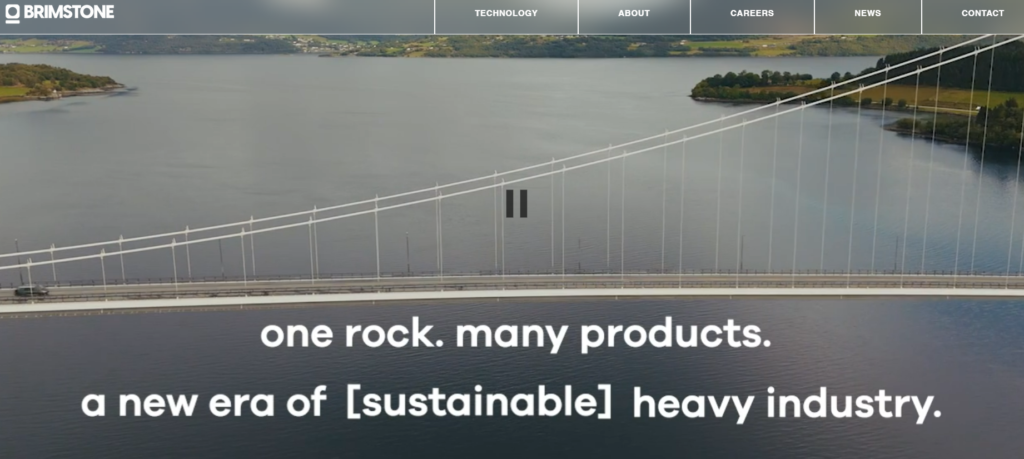
Source: Brimstone
Brimstone is a US-based startup producing carbon-negative cement by using silicate rock instead of limestone. This avoids the CO₂ emissions normally released when limestone is heated, making cement production drastically cleaner.
Cement is responsible for nearly 8% of global emissions, and Brimstone’s process not only eliminates process emissions but also captures CO₂ as a byproduct. It offers a drop-in solution that fits within the current infrastructure, enabling easier adoption across the industry.
Key Innovations
#1. Limestone-Free Cement: Produced from silicate rock without releasing CO₂.
#2. Carbon-Negative Chemistry: Captures more CO₂ than it emits.
#3. Drop-In Compatibility: Integrates with traditional cement production processes.
#16. Sicona Battery Technologies
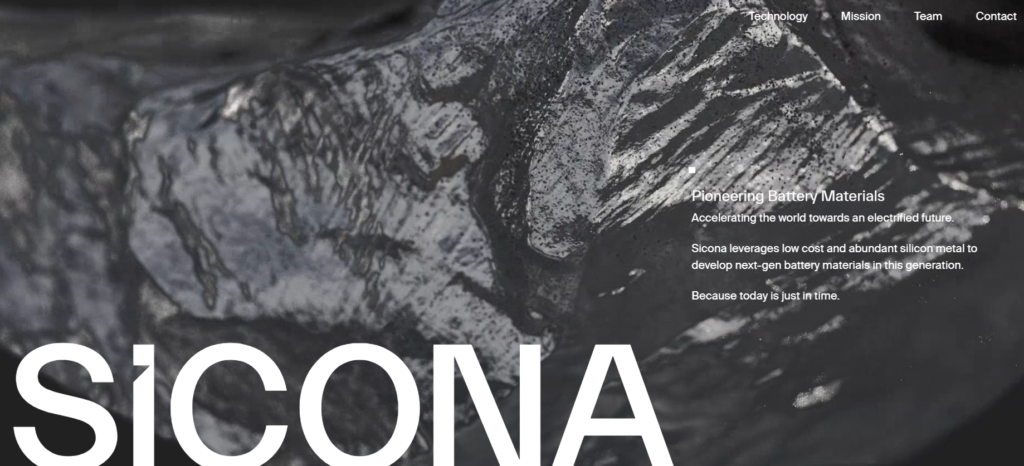
Source: Sicona
Sicona is an Australian company developing next-generation battery materials based on silicon composite anodes. These materials significantly boost energy density and battery performance while reducing charge times.
Sicona’s technology can be integrated into existing lithium-ion battery production, helping EV and energy storage manufacturers improve performance without redesigning entire systems. Its materials are already being piloted with global battery makers.
Key Innovations
#1. Silicon Composite Anodes: Replace graphite with 50% higher energy density.
#2. Manufacturing Compatibility: Works with standard lithium-ion production lines.
#3. Faster Charging Capability: Reduces charging times for EVs and storage systems.
#17. Aquila
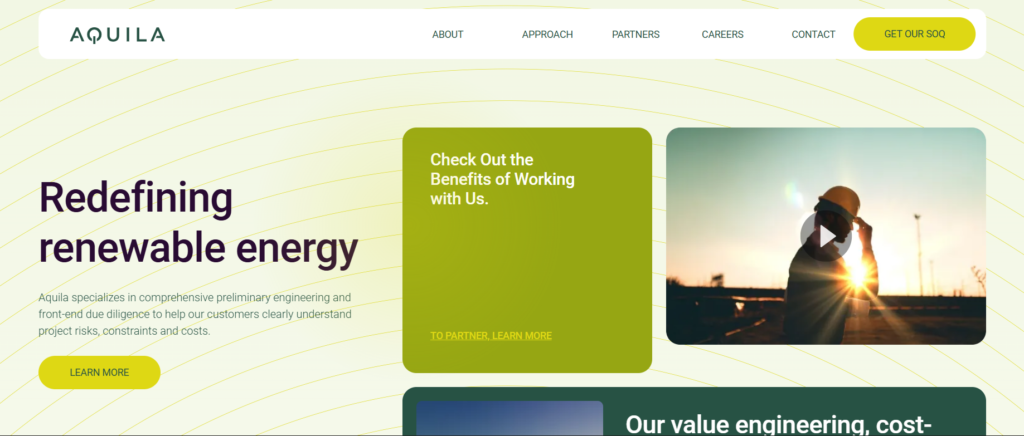
Source: Aquila
Aquila is a tech company focused on contactless energy transfer using magnetic resonance. Its wireless power systems are being developed for use in EV charging, robotics, and industrial automation, enabling seamless energy delivery without cables.
By removing physical connectors, Aquila’s technology reduces maintenance, improves safety, and opens new possibilities for the continuous charging of autonomous systems. This can help scale electric transport and clean automation in warehouses, factories, and city infrastructure.
Key Innovations
#1. Wireless Energy Transfer: Based on magnetic resonance for medium-range delivery.
#2. Industrial Applications: Powering robots, drones, and factory automation.
#3. EV Charging Innovation: Enabling dynamic, cable-free vehicle charging.
#18. Invenergy
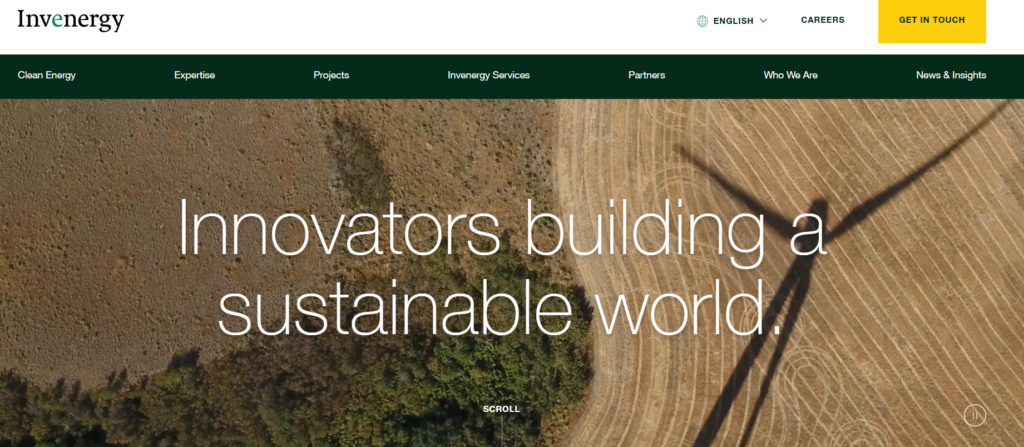
Source: Invenergy
Invenergy is a US-based developer of wind, solar, natural gas, and energy storage projects, with over 30 GW of clean energy developed worldwide. It builds and operates some of the largest utility-scale renewable projects in North America.
The company integrates battery storage with wind and solar to improve grid stability and accelerate fossil fuel phase-out. Its portfolio includes hybrid plants that deliver dispatchable renewable power to utilities and corporate buyers.
Key Innovations
#1. Wind and Solar + Storage Plants: Integrated systems for clean baseload generation.
#2. High-Capacity Energy Storage: Deployed alongside renewable assets for grid reliability.
#3. Private-Grid Infrastructure: Customized solutions for data centers and large facilities.
#19. Clean Power Research
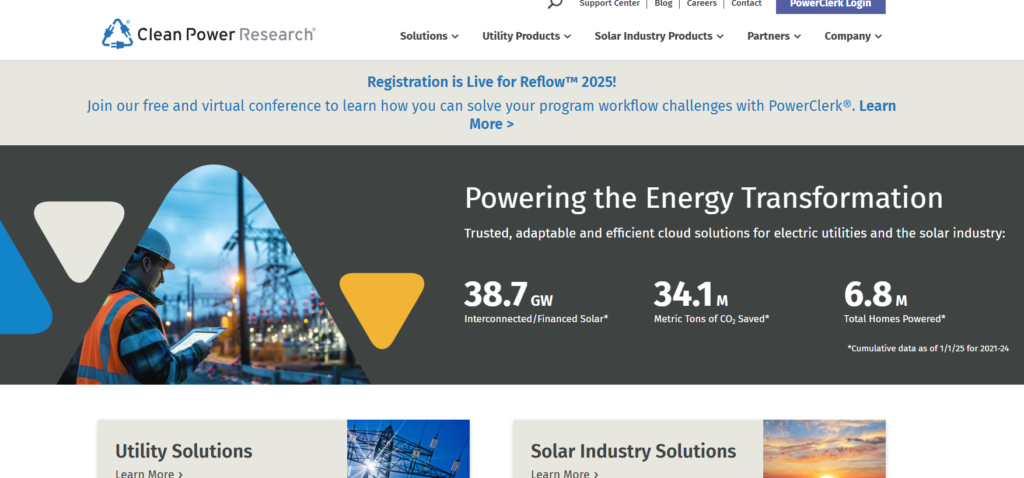
Source: Clean Power
Clean Power Research provides software that helps utilities, regulators, and energy developers make better decisions about renewable energy deployment. Its tools analyze solar potential, energy forecasts, and incentive program performance.
By digitizing planning and forecasting, the company enables more efficient clean energy rollouts. Its products are used across the US to optimize rooftop solar programs and streamline utility operations.
Key Innovations
#1. PowerClerk: Software for automating solar program management.
#2. SolarAnywhere: Cloud-based solar resource data and forecasting platform.
#3. WattPlan: Customer engagement tool to model clean energy upgrades.
#20. Fluence
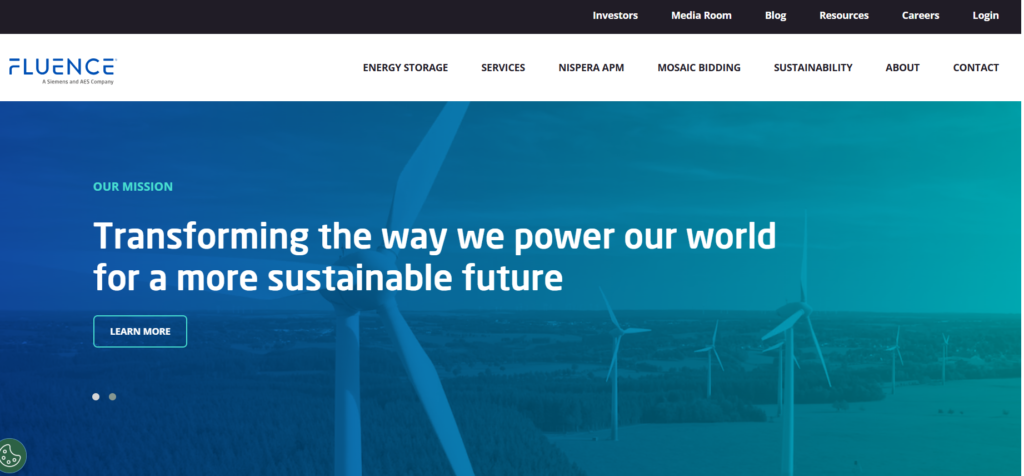
Source: Fluence
Fluence is a global energy storage technology provider co-founded by Siemens and AES. It designs and deploys lithium-ion battery systems that support grids in over 40 countries.
Its platform helps utilities balance supply and demand, manage renewable intermittency, and reduce reliance on fossil peaker plants. Fluence also offers AI-driven software that optimizes storage system performance in real-time.
Key Innovations
#1. Gridstack: Industrial-scale battery energy storage for utility grids.
#2. IQ Platform: AI-powered software for real-time energy optimization.
#3. Modular Architecture: Enables flexible deployment for solar, wind, and hybrid projects.
Conclusion: Green Tech Is Scaling Fast. Innovation Intelligence Matters Even More.
From iron-air batteries to hydrogen-powered planes, these 20 companies aren’t just cutting emissions; they are building the infrastructure of a cleaner world. But in a market flooded with green promises, how do you separate true innovation from well-marketed hype?
That’s where GlobalPatentSearch.ai comes in.
Whether you are an investor, policymaker, or tech leader, GPS helps you go beyond the headlines by mapping real innovation timelines, uncovering patent-backed technologies, and showing how product features align with filed IP.
Want to see who’s really shaping the future of clean energy, mobility, and storage? Start exploring with the Global Patent Search Tool today.

